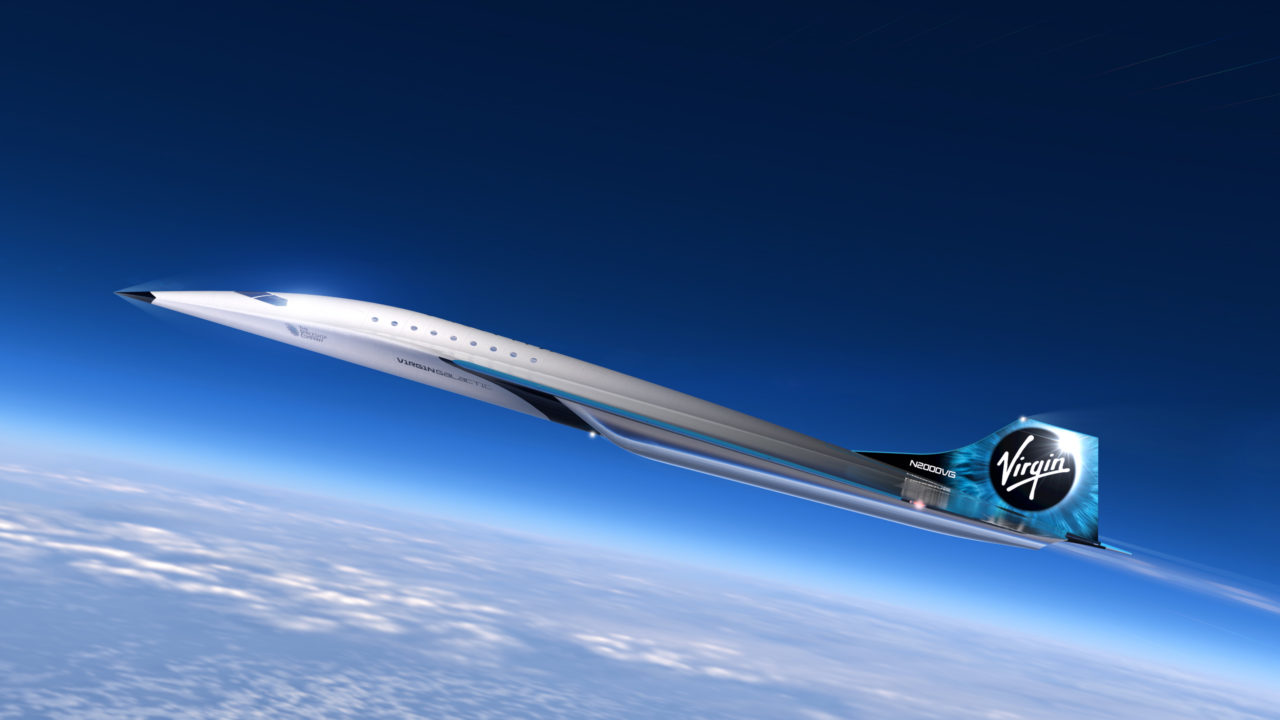But Concorde was never economically viable and it certainly wasn't environmentally friendly. It was noisy for starters, whether taking off, landing or going through the sound barrier and it got a lot of complaints. Many countries banned it from operating in their airspace because of the sonic booms. There were also worries about the damage it was making to the ozone layer and atmospheric pollution.
So will the new supersonic designs fare any better and manage to fully address these issues? Virgin Galactic, Spike Aerospace and Boom Supersonic are three companies that have recently announced new details on their plans to introduce a new fast and luxurious way to travel and claim that they will address environmental concerns.
Virgin Galactic, in a separate programme to their SpaceShipTwo concept to take tourists into space, has unveiled plans to create a delta winged supersonic aircraft. The company has announced they are working with Rolls-Royce to create an aircraft capable of travelling at Mach 3, or about 3,700 kilometres per hour, bringing the flight time from London to Sydney down to just five hours.

Flying at around 18,300m (60,000ft) the aircraft is being designed to carry up to 19 people in first or business class configuration. The plane is being developed to use sustainable aviation fuel and Virgin Galactic maintain they are striving to "develop sustainable, cutting-edge propulsion systems for the aircraft," according to their Chief Space Officer George Whitesides. No mention is made of the sonic boom that a Mach 3 aircraft would undoubtedly cause or any environmental issues connected to travelling at such speeds.
Meanwhile, the Spike S-512 is being developed by Spike Aerospace who recently announced that John Thomas, former Virgin Australia executive, will be joining to help sell the supersonic aircraft around the world. The Spike S-512 is being designed to fly at a mere Mach 1.6, which is about 40% faster than convention flights, with seats for around 18 passengers.

One of the key selling points of this aircraft is that it will be quiet because flying at around Mach 1.5 means they can use a modified version of existing engines rather than have to design a new purpose-built engine. The idea being that it will shave off time and costs from other supersonic aircraft but reduce the sonic boom because it can bounce the shockwaves up towards space rather than down to the ground.
Another supersonic aircraft in development is Overture by Boom, which recently rolled out its latest design and announced it is also working with Rolls-Royce to enable the first fully carbon neutral sustainable supersonic flight. Boom is planning on rolling out a 1:3 scale model of the aircraft in Oct-2020 with test flights due in the mid 2020s and the aim to provide passenger flights from 2030.
The delta wing aircraft will be an all-business class configuration to seat around 50 passengers. The company is aiming to have quiet turbofan engines and has a definite Concorde look to it although apparently will not require the afterburners which was one thing that made Concorde so noisy. Boom claim that by improving on Concorde's airframe and engines they will be able to reduce operating costs and so make the aircraft economically more profitable.
An early investor in the Boom aircraft is Japan Airlines and back in 2017 Sir Richard Branson was said to have invested in the aircraft design, although maybe creating his own version now means things have changed.

According to Boom's recent press release, the company and Rolls-Royce recognise "supersonic passenger travel has to be compatible with a net-zero carbon future, and the two teams will work together to address sustainability in Overture design and operations. Overcoming the technological challenges of supersonic flight provides a unique opportunity to accelerate innovation sustainably."
With two of these companies putting their faith firmly with Rolls-Royce it would seem that the company has a lot of incentive to deliver on its promises. The company has been taking a leading role in developing environmentally compatible aircraft for a number of years. This includes research into the development of an all-electric, carbon neutral aircraft that can reach 300 miles an hour.
At the moment it would seem that while all of these concepts are planning on using sustainable aviation fuel and apparently working to net-zero carbon designs, only the Spike design has addressed the noise caused by the sonic boom - with one even naming their company after it!